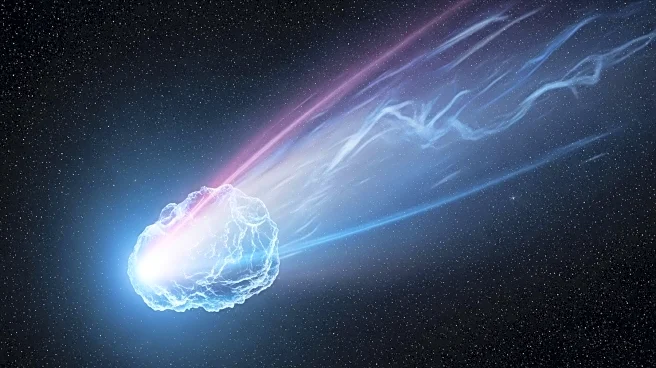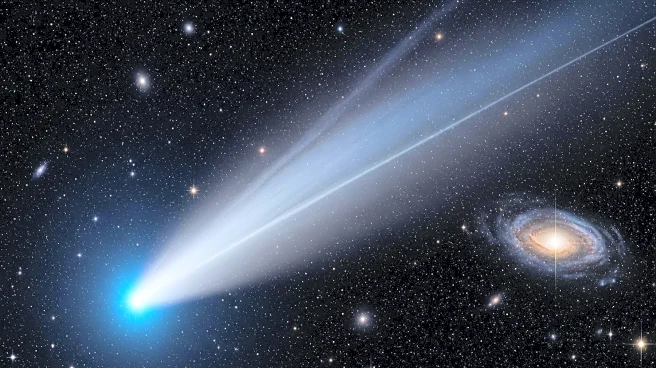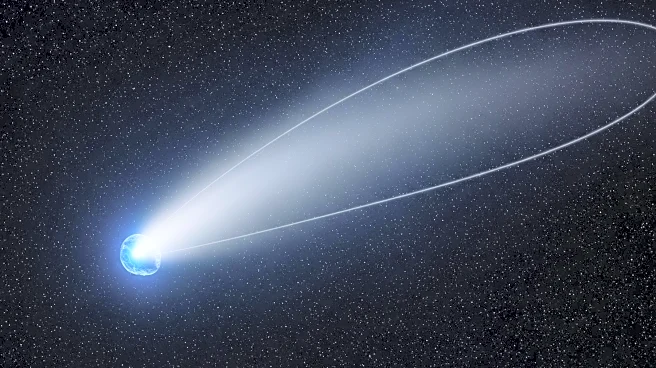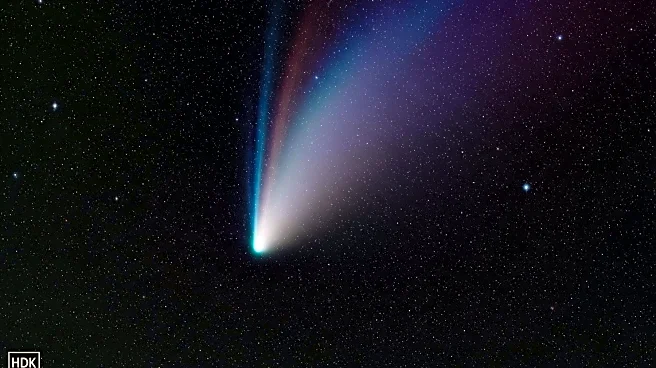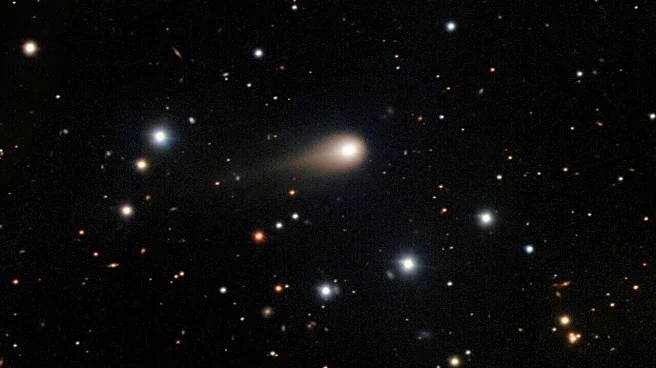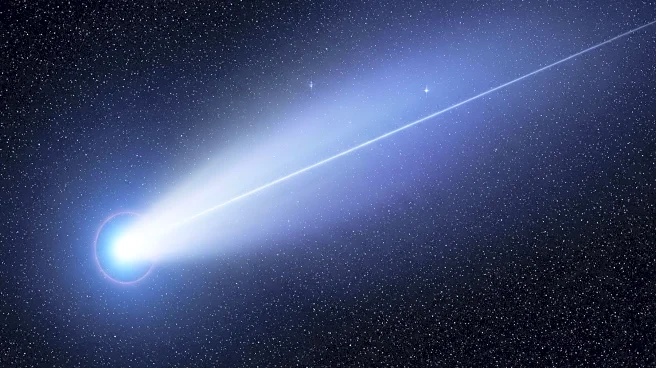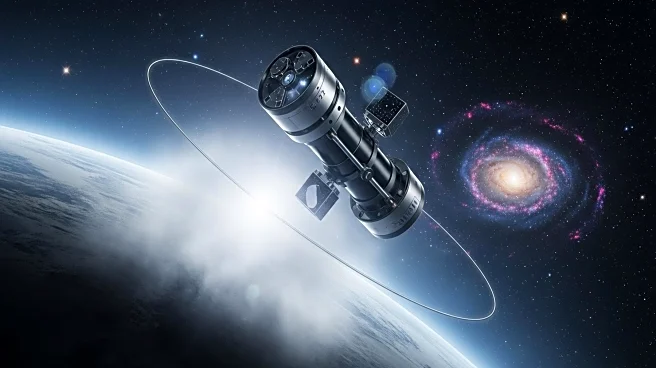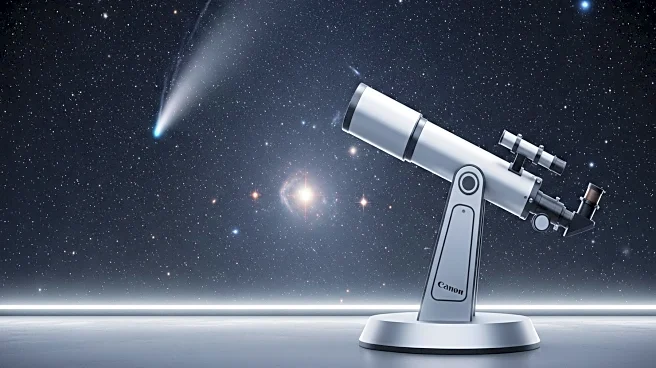What's Happening?
Astronomers have captured a striking image of Comet 3I/ATLAS, an interstellar object, showing its tail growing as it travels through the solar system. Discovered on July 1, 2025, by the ATLAS system, 3I/ATLAS is the third known interstellar object to pass through our solar system, following 'Oumuamua and 2I/Borisov. The image was taken on August 27, 2025, using the Gemini South telescope in Chile. The comet's tail, formed by solar radiation causing sublimation of its icy core, is a significant feature that provides insight into its composition. The observations suggest that the chemical makeup of 3I/ATLAS is similar to solar system comets, indicating common planetary formation processes across different star systems.
Why It's Important?
The study of interstellar comets like 3I/ATLAS offers scientists a unique opportunity to understand the materials and processes from other planetary systems. This can provide insights into the formation of planets and comets beyond our solar system, potentially revealing universal patterns in planetary development. The growing tail of 3I/ATLAS allows researchers to analyze its spectrum, which can help identify its chemical composition. Such studies contribute to our understanding of the diversity and dynamics of the galaxy, emphasizing the interconnectedness of celestial bodies across vast distances.
What's Next?
The Gemini South telescope is scheduled to observe 3I/ATLAS again when it emerges from the other side of the sun in November 2025. This will provide another opportunity to study the comet's characteristics and changes as it continues its journey through the solar system. Scientists are eager to gather more data to enhance their understanding of interstellar objects and their impact on our knowledge of the universe.
Beyond the Headlines
The observation of 3I/ATLAS not only serves scientific purposes but also engages the public through initiatives like Shadow the Scientists, which connects researchers with the general public. This fosters interest in astronomy and space exploration, highlighting the importance of public involvement in scientific discovery.


